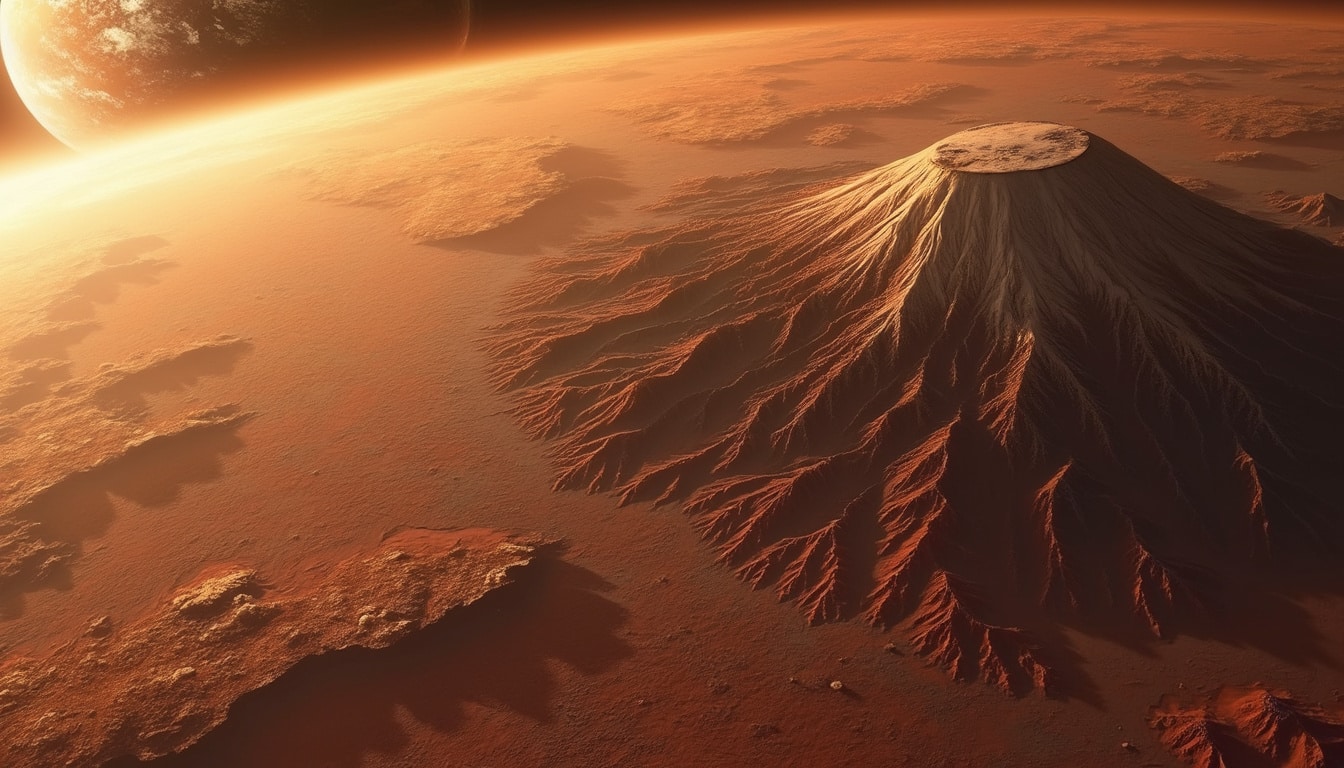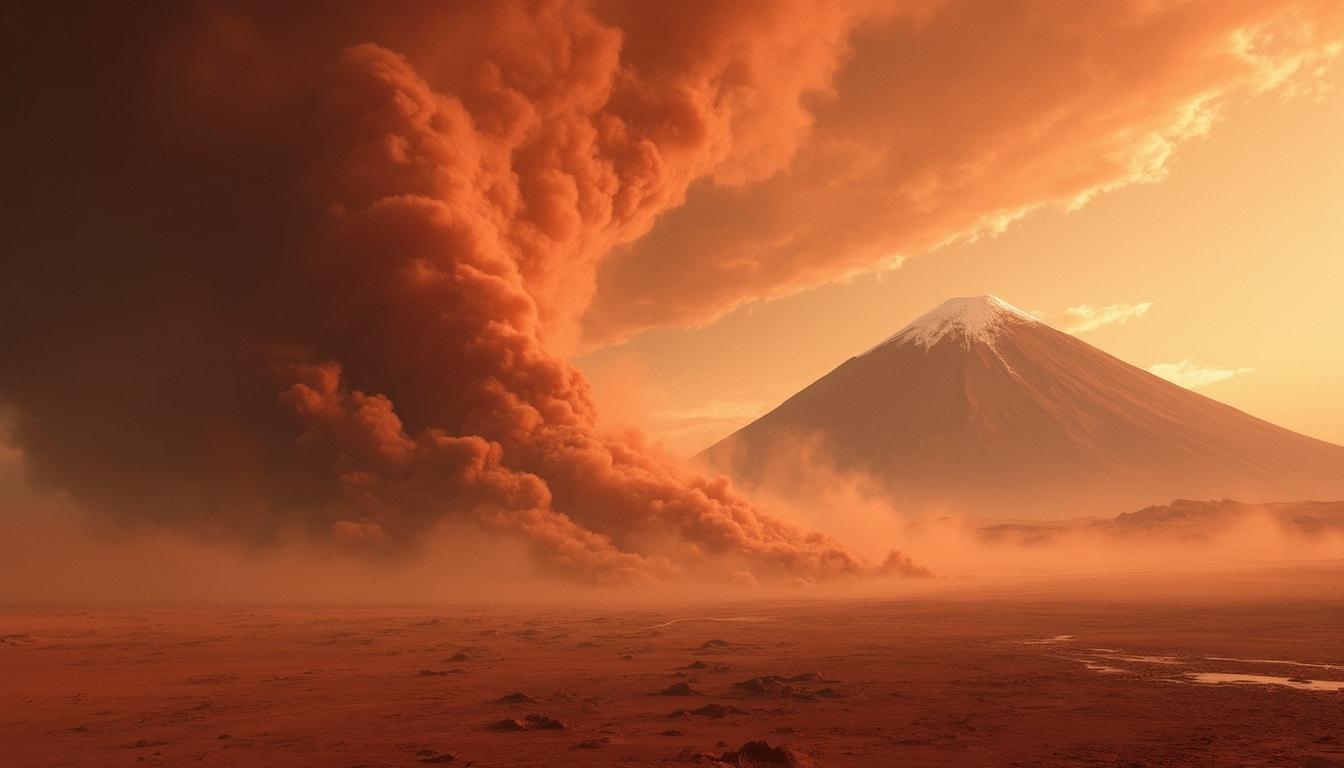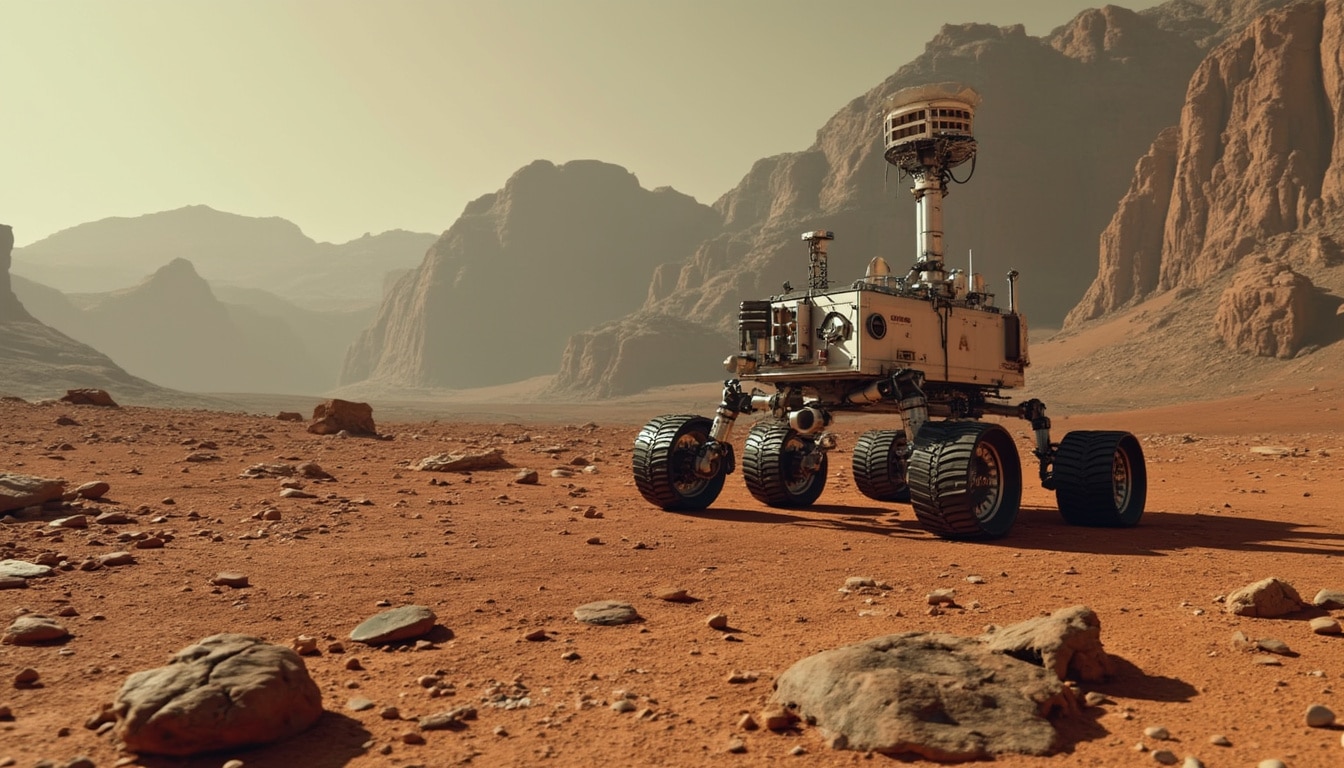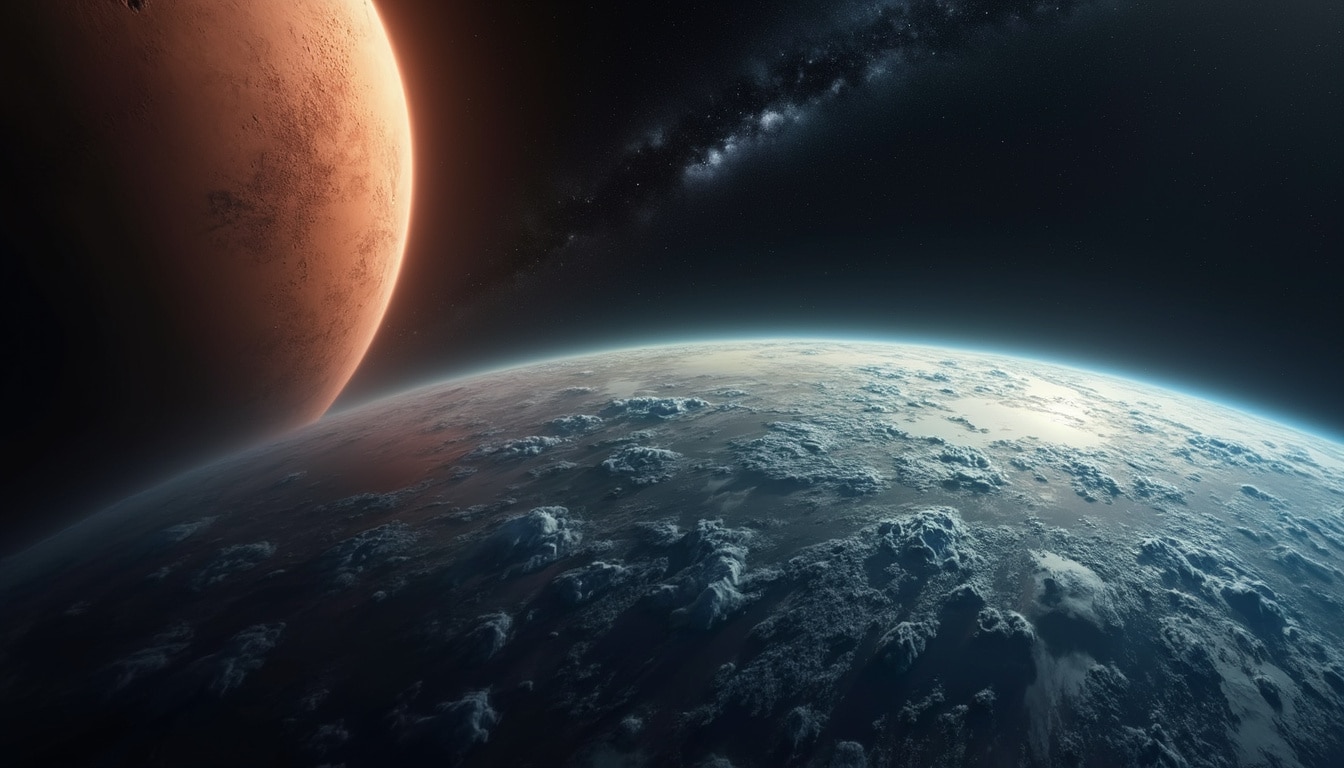Discover why Mars is known as the ‘Red Planet’
Mars, often referred to as the ‘Red Planet’, has captivated the imagination of humanity for centuries. This fourth planet from the Sun is not only a focal point of scientific scrutiny but also a symbol of adventure and cosmic mystery. What makes Mars red? What secrets does it hold beneath its rust-colored surface? In this exploration, we dive deep into the characteristics that define Mars, from its formidable geographical features to the enigmatic history of life on its surface.
Understanding the Red Planet
Mars is unique in many ways. With a radius of approximately 3,389.5 km, it’s roughly half the size of Earth but still one of the most intriguing planets in our solar system. Its reddish hue comes from iron oxide, or rust, that coats its surface, giving it a striking appearance when viewed from afar.
The significance of Mars extends beyond its visual appeal. The color red has long been associated with war and destruction, linking it to the Roman god Mars, which evokes a sense of intrigue and foreboding. Today, scientists are also interested in the potential for this cold, barren world to have hosted life at some point in its history.
This barren landscape once witnessed active geological events, including erosion by wind and liquid water. Robotic missions have unveiled that Mars had rivers and possibly oceans, suggesting that life could have existed long ago. The changing seasons and Martian weather patterns present a multi-dimensional view of a planet that was once dynamic.

The Geological Makeup of Mars
Mars exhibits a diverse range of geological features, including the largest volcano in the solar system, Olympus Mons, which stands at an astounding 21 km high—over twice the height of Mount Everest. The ancient Tharsis volcanic region illustrates the planet’s fiery past, where immense lava flows shaped the surface.
In contrast, Valles Marineris, a canyon system that stretches over 4,000 km, provides a glimpse into the geological forces that have eroded the landscape. This grand chasm is over ten times longer and four times deeper than the Grand Canyon on Earth, further emphasizing the immense scale of Martian features.
These contrasting highlands and plains, as well as the evidence of past water activity, indicate that Mars was not always the dry desert we see today. The intricate dance of geology and climate on Mars contributes to the ongoing study of its evolution and potential habitability.
Climate and Atmosphere
The Martian atmosphere is significantly thinner than Earth’s, composed mostly of carbon dioxide. The surface pressure on Mars is less than 1% of that at sea level on Earth, making conditions inhospitable for human life as we know it. Average surface temperatures hover around -81 degrees Fahrenheit, with extremes ranging from -225 to 70 degrees Fahrenheit.
Despite its cold, harsh environment, Mars experiences weather patterns characterized by massive dust storms that can envelop the entire planet, potentially lasting for months. The dynamics of wind and temperature fluctuations give rise to fascinating atmospheric phenomena, and understanding these patterns is crucial for future exploration missions.
Throughout the Martian year, the seasons can have dramatic effects on weather. Due to its axial tilt of approximately 25.2 degrees, Mars has seasons similar to Earth but prolonged. A Martian year lasts almost 687 Earth days, causing its seasons to be considerably longer.

Mars’s Polar Ice Caps
In addition to the notable landscape and atmosphere, Mars boasts polar ice caps composed of water and dry ice, which undergo seasonal changes that hint at the planet’s dynamic history. The northern ice cap, known as Planum Boreum, expands and contracts with the seasons, showcasing the influence of the Martian climate on these frozen deposits.
Both polar regions hold untapped potential for providing insights into Mars’s past climate and the possibility of life. The presence of water ice under the surface raises questions about whether microbial life may exist hidden beneath the Martian soil, potentially giving future explorers clues about life beyond Earth.
Scientists are actively investigating these ice caps. Indications from various missions suggest that beneath the ice, water may exist in liquid form, suggesting conditions that could have supported life.
The Search for Life
The quest for extraterrestrial life has captured human imagination for millennia. Mars stands at the forefront of this search, given its Earth-like features and historical presence of water. Notable missions like Viking, Pathfinder, and more recently, the Perseverance rover, are pivotal in investigating these potential habitats.
During the Viking missions in the 1970s, scientists performed experiments to detect microbial life in Martian soil. Although results were inconclusive, the interest in seeking life has revived with more advanced technology and exploration.
Currently, the Mars 2020 mission, which includes the Perseverance rover, aims to seek signs of ancient life by caching samples of Martian soil and rock for future return to Earth. This mission represents a significant leap in our ability to explore and understand the potential for life on Mars, essentially paving the way for future human colonization efforts.

The Role of Human Exploration
The exploration of Mars transcends robotic missions; plans for human travel are underway. Entities such as NASA and private companies like SpaceX have set ambitious goals to send humans to Mars, paving the way for potential colonization.
Human exploration poses unique challenges due to Mars’s harsh environment. Issues such as radiation exposure, thin atmosphere, and logistics for sustaining life will need to be addressed. Nevertheless, the excitement surrounding human missions adds a new dimension to our understanding of Mars and our place in the universe.
As a potential stepping stone to the stars, the continued exploration of the Red Planet may unlock mysteries not only about Mars itself but also about the origins of life and the prospects of finding it elsewhere in the universe.
Why Mars Matters
Mars is more than just a fascinating planet; it serves as a critical point in our understanding of planetary evolution, climate change, and the potential for life beyond Earth. As we observe Mars’s geology and atmospheric phenomena, we glean valuable insights that could inform future missions to other planets and beyond.
The study of Mars aids scientists in comparing and contrasting with Earth, prompting significant discussions about planetary habitability and the fate of our home planet. Furthermore, advances in technology and space exploration fueled by interest in Mars are paving the way for human access to the celestial body, marking a new frontier for exploration and scientific inquiry.
Beyond science, Mars holds significant cultural importance, representing hope, curiosity, and the quest to understand our universe. As we continue to explore the possibilities of life on Mars, we delve into the uncharted territories of our imagination, reminding ourselves of our innate desire to explore the unknown.





Leave a Reply